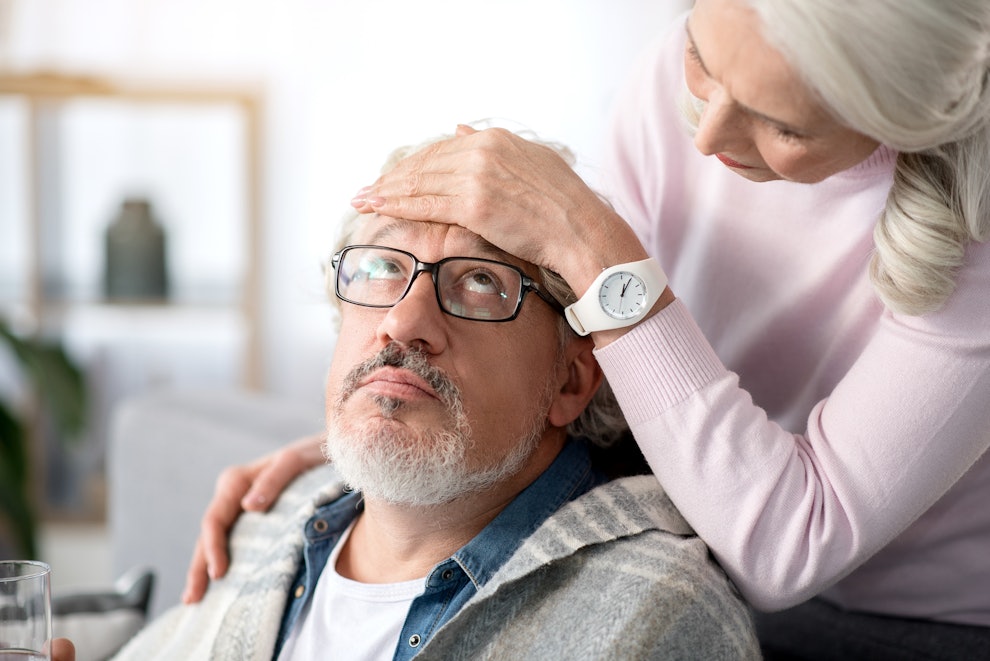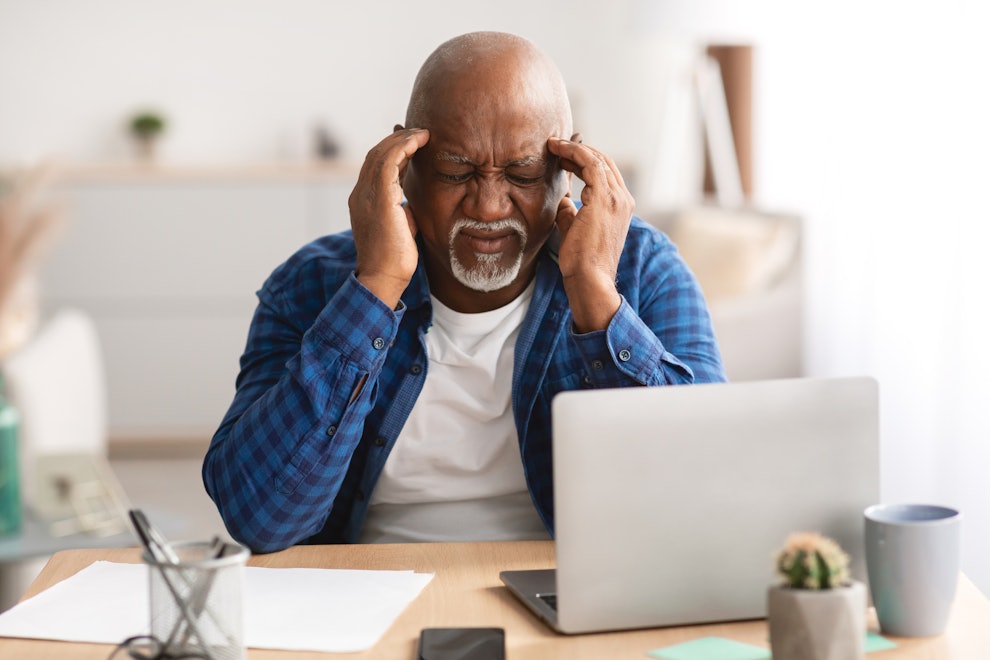Article at a glance
Headaches are a common condition, with at least half of adults worldwide experiencing a headache in the last year.
There are more than a hundred types of headaches that exist — the most common being primary headaches that aren’t associated with another health condition.
Primary headache types include tension headaches, migraines, and cluster headaches — which each have distinct symptoms.
Identifying the triggers of your headaches can help you reduce their severity and frequency.
A variety of treatments are available for headaches, including over-the-counter and prescription medications, lifestyle and behavior changes, and targeting pressure points for headaches.

Headache Basics
Headaches are a common condition that can bring plenty of discomfort to everyday life. The World Health Organization reports that 50% to 75% of all adults in the world experienced a headache in the last year. While some people experience headaches infrequently, others are plagued by chronic headaches and even migraines. Understanding whether you have a primary or secondary headache is the first step in determining how to get rid of headaches. Read on to learn more about the types of headaches, their symptoms, and common treatments to help rid yourself of the discomfort they cause.
Common Types of Headaches
Headaches are common conditions marked by pain in the head or face. In fact, a headache is the most common type of pain, according to the National Library of Medicine. You might describe a headache as a dull or throbbing pain in your head. Even though more than 150 types of headaches exist, some are particularly common, and understanding them can help you identify the best treatment for the associated pain.
The most common types of headaches are primary headaches, which means they’re not brought on by another health condition. Instead, these headaches are standalone issues to be addressed. Several types of primary headaches exist.
Tension Headaches
Tension-type headaches are the most common kind of primary headache. They result in mild to moderate pain in your face or neck. They are not typically associated with other symptoms. Episodic tension headaches occur fewer than 15 days in a month, and chronic tension headaches occur more than 15 days in a month.
Migraine Headaches
Migraine headaches are more debilitating than tension headaches. They’re often preceded by auras, which are sensory and motor symptoms that may signal a migraine is developing. Auras are different for everyone but can include seeing bright dots or lights, numb or tingling skin, blind spots or temporary vision loss, or speech changes. Migraines can occur with or without an aura, and some even occur without any head pain.
Cluster Headaches
Cluster headaches are extremely painful and typically occur on one side of the head. These short headaches may only last 30 to 45 minutes, but they recur throughout the day, often up to eight times in a 24-hour period. These headaches can continue in this pattern for weeks or months, often appearing at the same time of day.
Headache Symptoms
Different types of primary headaches have different symptoms, which can help you determine what type of headache you have. Tension headaches are typically the mildest, although they can still lead to some discomfort. These headaches usually occur on both sides of the head, and while the pain is constant, it’s not throbbing.
Migraines are marked by more severe pain than your typical tension headache. In addition to experiencing pain on one or both sides of the head, migraines can lead to auras, followed by a throbbing, painful headache that lasts for hours to days. During the postdrome phase of a migraine, you’ll feel a bit off after you recover from this debilitating headache.
Cluster headaches often result in a burning or piercing feeling and usually impact just one side of the head. They don’t last for long but can reoccur for days. Having a cluster headache can make you feel like you need to get up and move to relieve symptoms.
What Causes Headaches

A variety of factors can lead to tension headaches. Eye strain, including staring at a computer for a long time, can be a culprit. Stress and difficulty sleeping also contribute to these types of headaches. Lifestyle factors can also be triggers. These may include:
Drinking alcohol, especially red wine
Smoking, or consuming nicotine in another form
Eating processed foods with nitrates
Having poor posture
Skipping meals
Overexerting yourself when exercising
Migraine headaches have other triggers, including movement, light, and sound. Individuals who are prone to migraines might be predisposed to developing them, as research indicates that up to 80% of people with migraines have a first-degree relative who gets them too. Like other types of headaches, smoking and stress can also lead to migraines.
The causes of cluster headaches are less clear, although research is being done to determine what precisely causes them.

How to Get Rid of Headaches
A variety of treatments are available for headaches, including your standard headache medicine that can help relieve pain. Consider these options as you work to reduce your headache symptoms:
Over-the-counter pain relievers, such as ibuprofen, can help reduce symptoms of the occasional tension headache.
Prescription medications are also available if you’re living with severe or chronic headaches.
Relaxation and stress management techniques can help relieve a stress headache.
Self-treatment techniques such as applying a cold or ice pack to the head, resting in a dark, quiet space, or taking a walk are helpful ideas.
Massaging pressure points for headaches located at the base of your skull, neck, and middle of your back may help relieve stress.
No one treatment works for every person, so you’ll want to try a variety of treatments to determine the best way to reduce your headache symptoms. If you’re prone to headaches, consider keeping a log to determine your triggers, which may help you find an effective treatment.
When to Talk to Your Doctor

When over-the-counter or at-home treatments don’t work, it’s time to talk to your doctor. He or she can help determine whether you’re dealing with primary or secondary headaches, which in turn can help guide your treatment. And, you should always seek medical attention when a headache is severe, seems unusual, is accompanied by an inability to function (talk, walk, see), or follows trauma. So, don’t hesitate to reach out to your doctor when headaches become a problem in your life.
Understanding how to get rid of headaches begins by identifying the type of headache you’re experiencing. While headaches are common, chronic headaches can become more than a nuisance in your daily life. If you’re dealing with chronic or cluster headaches or migraines that cause severe pain, you want to find effective treatments to help rid yourself of the discomfort. Using at-home treatments, including headache medicine, can help, but you also may want to check with your doctor to determine the best way to treat your headaches and reduce your pain.
Sources
- https://www.who.int/news-room/fact-sheets/detail/headache-disorders
- https://medlineplus.gov/headache.html
- https://my.clevelandclinic.org/health/diseases/8257-tension-type-headaches
- https://my.clevelandclinic.org/health/diseases/5005-migraine-headaches
- https://my.clevelandclinic.org/health/diseases/5003-cluster-headaches
- https://www.nwhealth.edu/news/dr-renee-talks-tension-headaches-and-pressure-points-with-popsugar/
Become a patient
Experience the Oak Street Health difference, and see what it’s like to be treated by a care team who are experts at caring for older adults.



